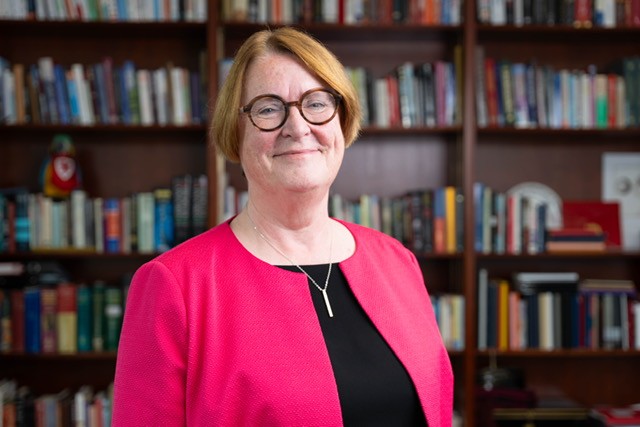Martin Moore argues that the British press has prevented a proper debate on press regulation
It rarely takes long, in arguments about free speech, before someone refers to John Milton or John Stuart Mill. Most of us remember one particularly strong defence of free speech made in both Milton’s Areopagatica and Mill’s On Liberty. Any attempt to censor, suppress or constrain free speech, Milton and Mill argue, denies people access to the truth.
Truth and falsehood should do battle, Milton wrote, in a free and open encounter. Only in such circumstances could truth triumph.
Silencing an opinion, Mill wrote, either robs people of the truth, or – if the opinion is wrong – deprives people of “the clearer perception and livelier impression of truth, produced by its collision with error”.
In the heated, often fractious, debate about press regulation in Britain, the rhetoric of freedom has been widely deployed. Barely a day went by in October 2013 when a national newspaper did not publish a report, editorial or leader about the importance of our free press. This freedom was, most of those pieces argued, put in jeopardy by the system of regulation set out in the cross-party Royal Charter and agreed on 30 October 2013.
Yet it would be hard to find a debate in modern times that has been less free than the one about press regulation. Far from being Milton’s “free and open encounter” between different views, the debate in the press has been virtually monopolised by those with one perspective. The public have, to use Mill’s terms, been deprived “the clearer and livelier perception of truth” since they have, with notable exceptions, only been presented with one view.
The public have not been given the facts, the arguments, or the diversity of perspective from which to make up their own minds about press regulation.
On the facts, the public have been deprived of even the basic material from which to make up their own minds. During the Leveson Inquiry, for example, the press simply failed to report on potential alternative systems of press regulation. Though numerous proposals were put forward for new systems, including A Free and Accountable Media from the Media Standards Trust, almost none were reported on. This is despite the fact that Leveson based many of his eventual recommendations on these proposals. By contrast, there were 56 articles about the press’ own plan. (See MST analysis)
When it came to the report itself, the misreporting of Leveson’s main recommendation was, as the renowned editor Harold Evans said in the Hugh Cudlipp Lecture, “staggering.” David Yelland, former editor of The Sun, said in his inaugural Leveson Anniversary Lecture, there was a party line amongst newspapers about what Leveson said which was “not really true”. Leveson wrote: “Despite what will be said about these recommendations by those who oppose them, this is not, and cannot be characterised as, statutory regulation of the press.” Yet this is exactly how they were characterised.
Leveson’s system would, many newspapers claimed, allow for state censorship. This is despite the fact that Leveson was adamant, throughout this recommendations, that the state should have no role in the system beyond its establishment, and that no regulator should have the power to stop anyone publishing anything.
Leveson’s recommendations would enable government interference, other papers claimed. Yet Leveson recommended the opposite, going so far as to say that the UK needed a law to prevent government interference. This recommendation was not even referred to in the Daily Mail, the Mail on Sunday, The Sun, The Times, The Sunday Times or in the Daily Express. It was referred to only once in most other papers when the report was published.
Then there was the coverage of, or failure to cover, the process that followed the publication of the report. In January and February 2013 the Prime Minister David Cameron and two other key ministers, Oliver Letwin and Maria Miller, together had more than 30 meetings with senior executives and editors from the press. You would not know this because not a single one of those meetings was reported.
In February last year, we – the Media Standards Trust – wrote to Lord (Guy) Black, one of the key figures drawing up the industry’s response to Leveson who attended at least eleven of these, requesting that they be made public. He refused. We only now know of them because of the official lists of Ministers’ meetings published in the autumn (Oliver Letwin meetings, January-March 2013; Maria Miller meetings, January-March 2013; David Cameron meetings January-March 2013). Yet they remain unreported in the press.
Instead, newspapers chose to fixate on a single meeting that was held on the evening of Sunday 17 March, at which representatives of the victims’ campaign group – and the author of this piece – were invited to view the agreed cross-party charter before it went before parliament on 18 March. At this meeting, newspapers claim, a Royal Charter was cobbled together over pizza. Except it wasn’t. What happened at this meeting, and the context for it, has been described in detail by Oliver Letwin to a parliamentary select committee (Oral Evidence, 16th April 2013). Yet Letwin’s account has been ignored because it contradicts the press’ narrative.
Therefore by the time a cross-party Royal Charter was agreed on 18 March, a member of the public would probably have thought – based on what they had read in most papers – that Leveson concocted a new system from his head, that this new system allowed for state censorship and government interference, and that the agreed Royal Charter to implement the system was improvised by campaigners for the victims in the middle of the night in Ed Miliband’s office. None of this is true.
Members of the public have been similarly ill-served by much of their press when it comes to argument and diversity of opinion. There has not been “the collision of adverse opinions” as Mill argued there needs to be. In the lead up to the publication of Leveson’s report there were 28 leader columns about press regulation in national newspapers – 23 were wholly negative; three had negative and positive comments; two were neutral. Not one was wholly positive. Since publication of the report, editorials and opinion pieces have been just as consistently negative.
What is remarkable is that throughout this period, despite the consistently negative press coverage, public opinion has remained stubbornly steady. The public want tougher regulation of the press. They are in favour of a system similar to the one proposed by Leveson. They are comfortable with a system of regulation underpinned by law. In other words, the majority of the public disagree with the press (see this list of all polls since May 2012). Yet their views are not represented in the papers.
Instead of representing the views of their public, much of the press have chosen to deploy the rhetoric of press freedom to stamp on dissenting voices. Ironically, Leveson predicted the press’ response to his own report. Buried in Volume Three, amongst a detailed examination of the Data Protection Act, Leveson lays out the modus operandi of certain newspapers when put under pressure to reform. First, there is “resistance to independent regulation of both law and standards.” Next, the press present “a confrontational, aggressive and personal approach to its critics.” It then engages in “powerful behind the scenes political lobbying in its own interests.” Finally, it uses “the deployment, through a very loud megaphone, of the rhetoric of the freedom of the press to stifle rational criticism and debate about where the public interest lies” (Volume 3, p1, 107).
The rhetoric of press freedom has been, and continues to be, used by parts of the press as a way of preventing a “free and open encounter” between truth and falsehood in the debate over press regulation. The public, sadly, have been the losers.





